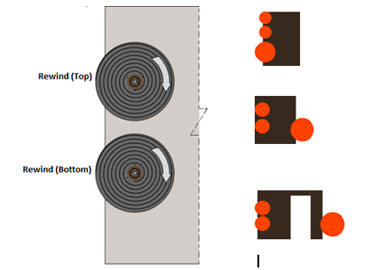
Technology

SP Ultraflex Systems Pvt. Ltd. manufactures slitting and rewinding machines of the universally proven duplex center differential rewinding type for the conversion of flexible packaging substrates and laminates.
Types of Converting Slitting and Rewinding Machines

When classified with respect to the rewinding technology applied, there are broadly two types of converting slitting and rewinding machines
| Duplex center rewinding machines |
| Duplex center-surface rewinding machines |
To understand the above techniques, it is necessary to understand the terms "Duplex", "Center rewinding" and "Surface Rewinding".
Duplex Rewinding

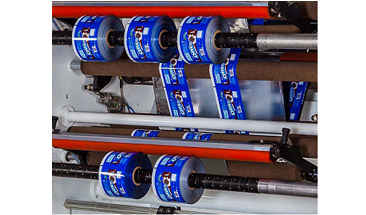
Center Rewinding

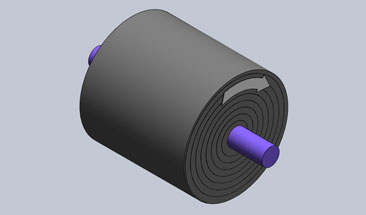
Surface Rewinding

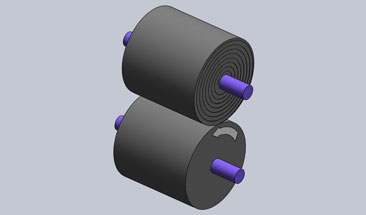
Center Surface Rewinding

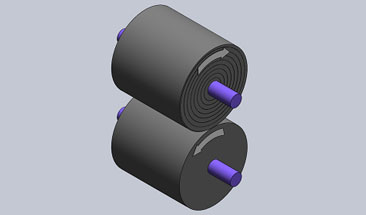
The machines using center-surface rewinding technology are simple in construction with a minimal role of electronics and have offered invaluable service to the flexible packaging and converting industry in its nascent stages.
Center-surface rewinding technology was commonly used because of its ability to produce large diameter slit reels tight enough to handle the rigors of transportation to the customer. Since the winding drum is not required to transmit increasing torque with the build up in reel diameter, tightness was achieved without the need for complicated drives and controls.
Limitations of Center-Surface Rewinding Technology

| Center-Surface Rewinding technology is not suitable for Delicate Substrates which can easily get damaged or blocked due to the contact pressure with the winding drum. |
| It is difficult to overcome problems arising from the differences in adjacent reel diameters arising out of Thickness Variations which are very common in most flexible packaging substrates, especially in the case of composite structures / laminates commonly used today. |
| In the Rewind section, the two Rewind shafts are mounted on a pair of levers pivoted on either side of the winding drum and pressured against the drum through pneumatic cylinders. In most such machines, the shafts have to be removed during finished reels changeover. A fall out of this construction is the increased time and effort for changeover between sets, bringing down the output levels. |
Over a period of time, center winding evolved to overcome the limitations of center-surface winding by the use of better technology and refinement in the following areas:
How duplex center differential rewinding technology overcomes the limitations of center-surface rewinding technology

Differential Winding

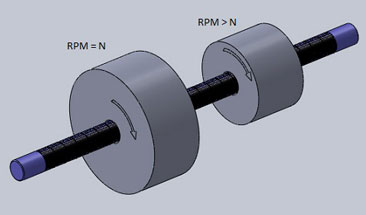
Diameter Sensing Device

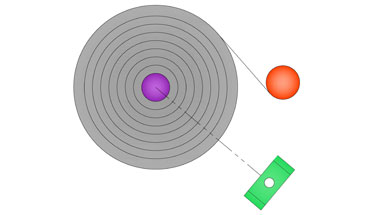
Layon

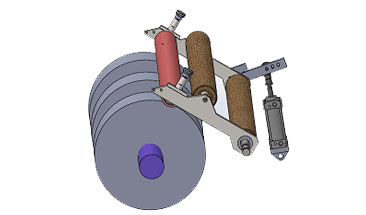
Cantilevered Construction

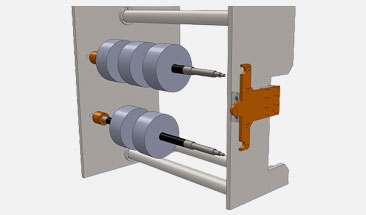
Rewind Shaft Top and Bottom

